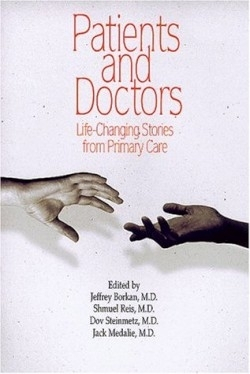Patients and Doctors
Life-Changing Stories from Primary Care
Managed health care is not the subject of this collection of doctors? stories about encounters with patients, but it is certainly the phantom under the bed. In nearly every story, the patient’s level of care is impacted significantly when the physician takes the time to see beyond symptoms and test results and gets to know the circumstances of the patient’s life. Failure to do so sometimes has disastrous consequences.
Perhaps then it is no surprise that the minority of these stories come from the United States, where the influence of managed care organizations has frequently reduced doctor-patient encounters to the minimum needed to obtain a diagnosis and write a prescription. American readers may be shocked to learn that doctors in other countries still make house calls!
In the introduction, editor Borkan, an Israel family doctor and researcher, and Miller, a U.S. physician-anthropologist, bemoan the decline of storytelling in the doctor-patient relationship. “Although privileged to hear the intimate stories of others? lives, many physicians allow little time for expression and convert patients? narrative into symptom checklists,” they write. “Research has documented that physicians give patients an average of eighteen seconds to tell their stories before interrupting and diverting the focus on to doctor-oriented disease topics.” In addition to the efficiency time crunch of managed care, the pair blames this neglect on the replacement of clinical teaching by scientific theory and classifications of symptoms and disease, as well as the growth of “technomedicine” since World War II, which led to stories being labeled “anecdotal” and “unscientific.” Such labels may be appropriate, the editors say, since “anecdotes and stories, personalized and particularistic, may well lead to errors in diagnosis and treatment if generalized.” Still, patients? stories have a key role to play in medicine, as the physicians in this collection demonstrate.
This book is about more than listening to patients; it’s a forum for doctors to tell their stories and bring a narrative to their professional lives. Borkan and Miller suggest that such an exercise may provide teaching material for medical students and residents, encouragement for weary physicians and “may also hearten patients by introducing physicians who think, feel and care.”
The stories are grouped by themes and vary stylistically; some are short and to the point, others are descriptive and engaging enough to be included in any collection of literature. The tales also span the emotional spectrum from humorous to gut-wrenching.
The editors, all of whom practice or teach family medicine, collected these tales from nearly fifty physicians in more than a dozen countries in hopes that the reader, “upon encountering the stories of family and general physicians struggling with their own strengths and limitations, will benefit from the richness of description of the local worlds and gain fuller understanding of healing, the healers, and, ultimately, of themselves.”
Reviewed by
Sharon Flesher
Disclosure: This article is not an endorsement, but a review. The publisher of this book provided free copies of the book to have their book reviewed by a professional reviewer. No fee was paid by the publisher for this review. Foreword Reviews only recommends books that we love. Foreword Magazine, Inc. is disclosing this in accordance with the Federal Trade Commission’s 16 CFR, Part 255.

